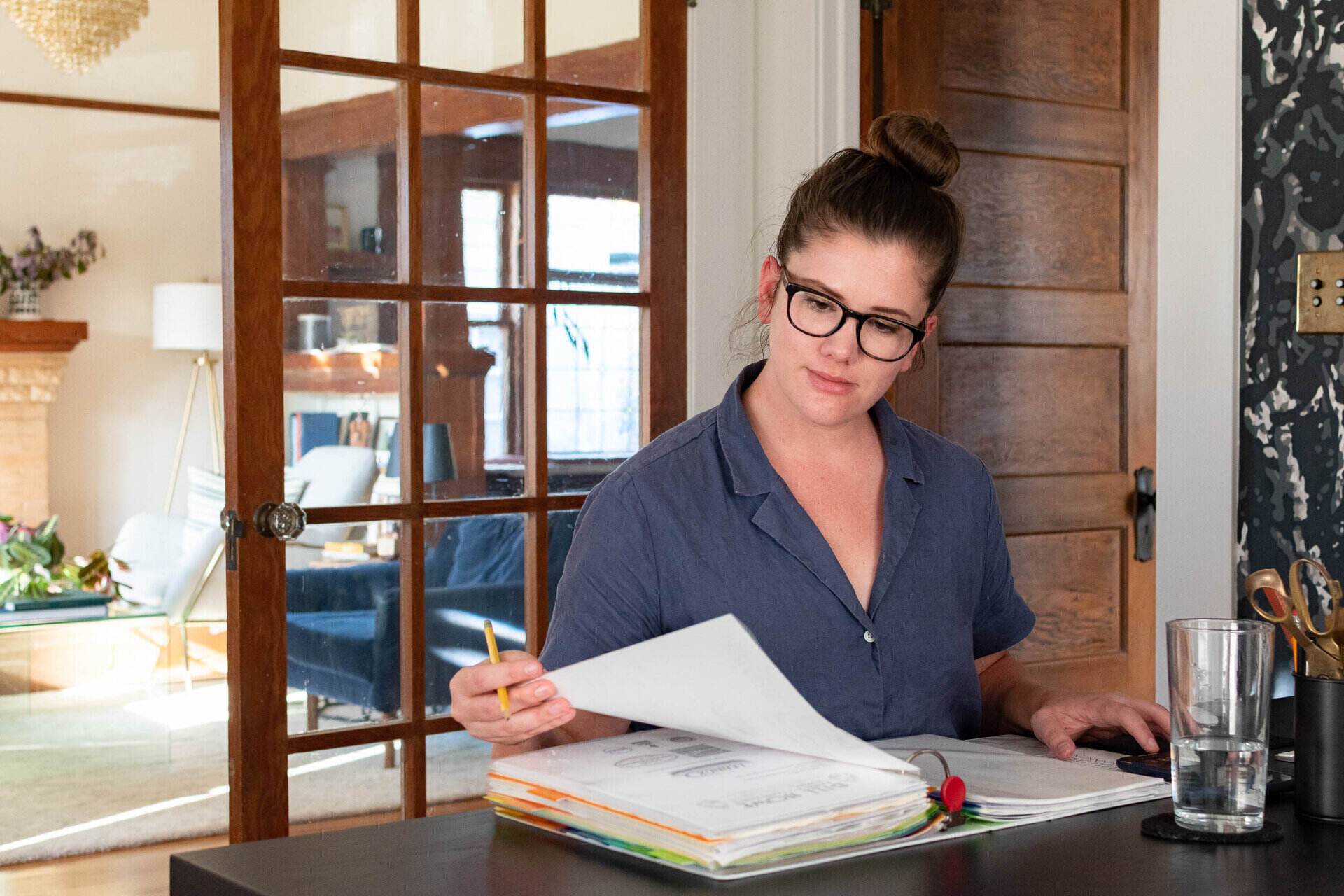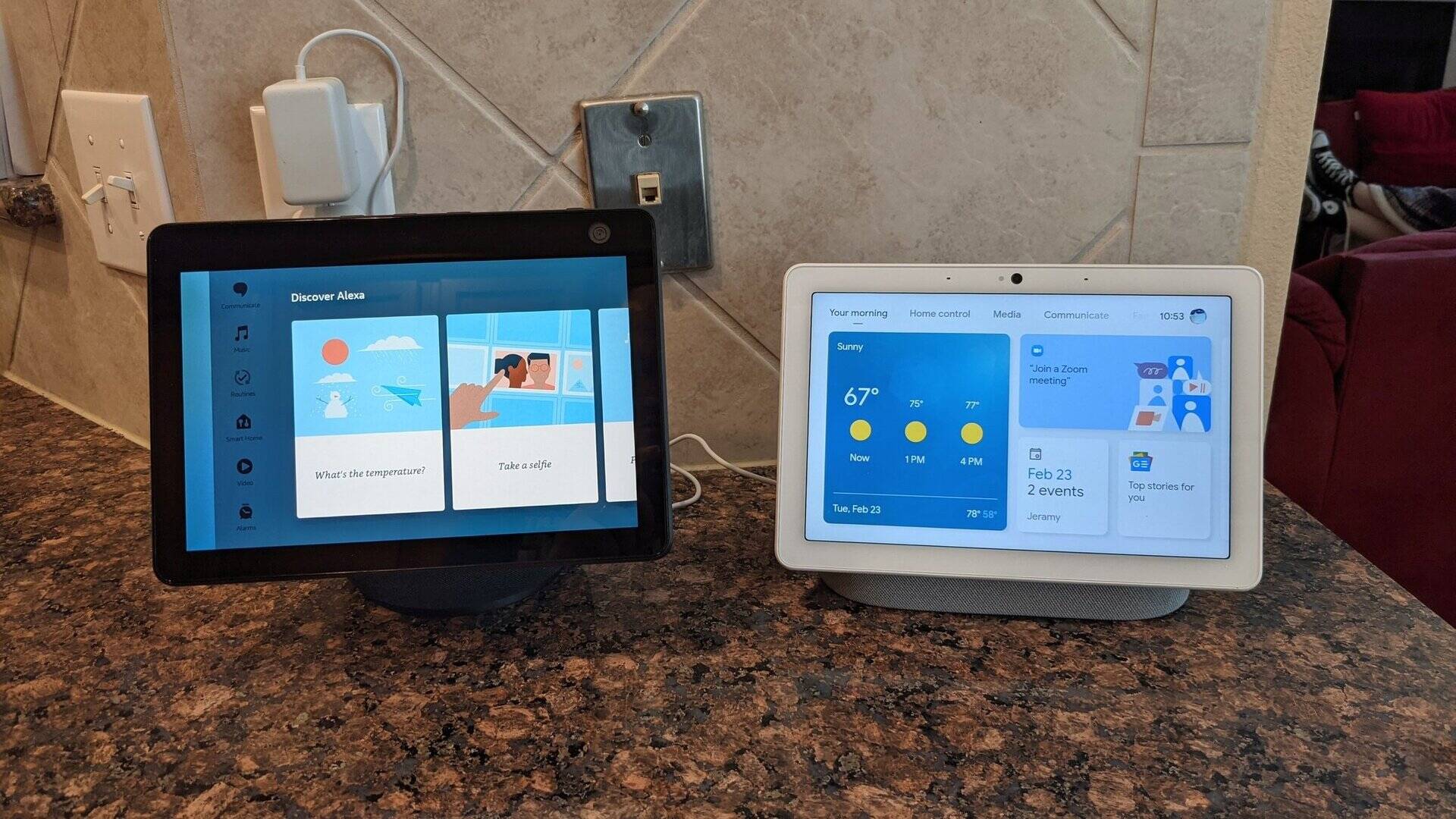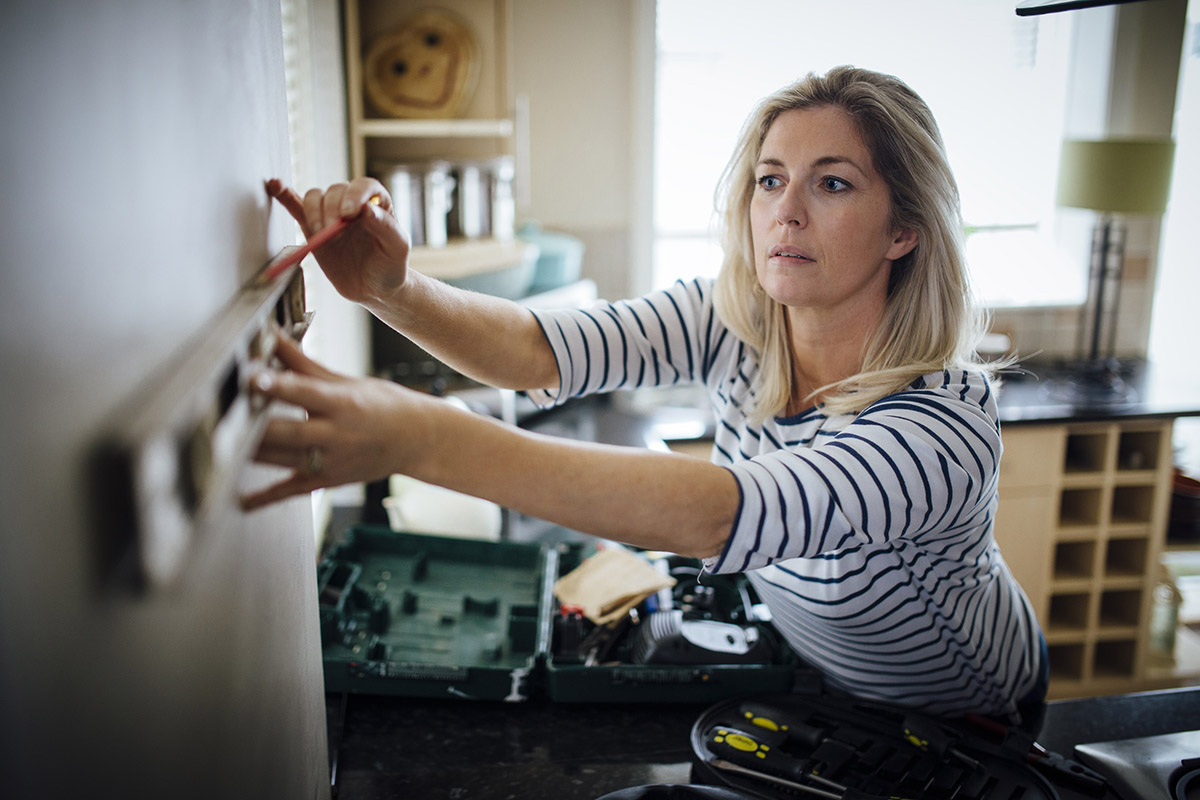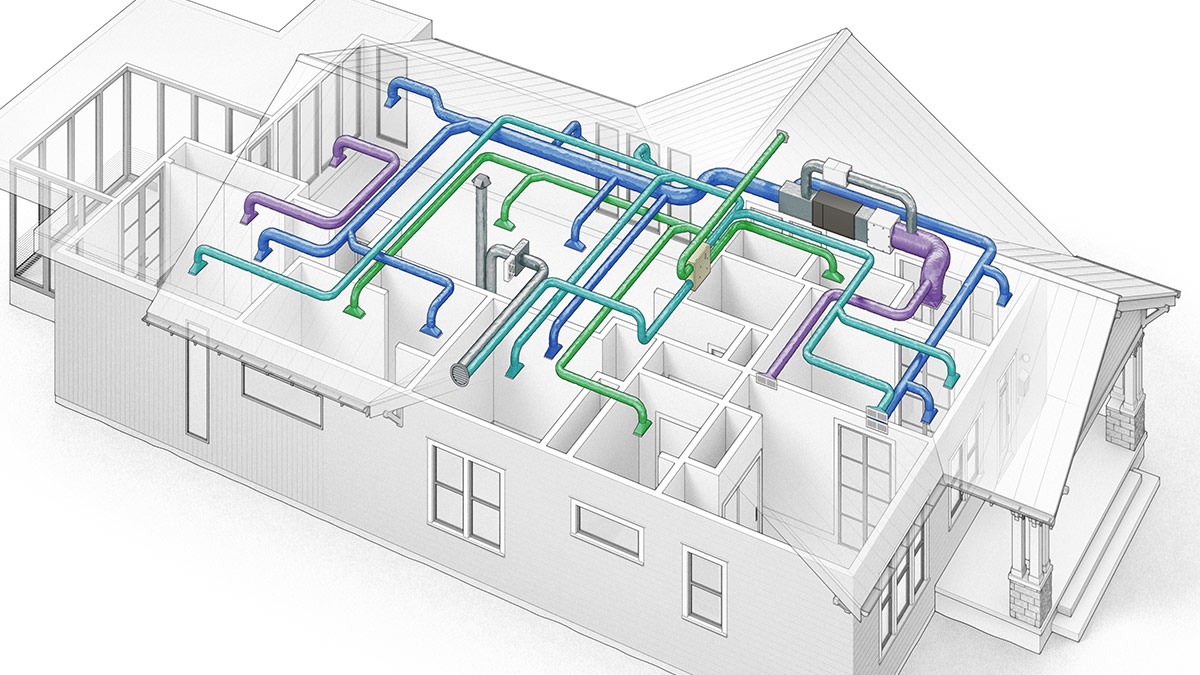Home>Renovation & DIY>Home Renovation Guides>Which Home Improvement Shows Are Staged


Home Renovation Guides
Which Home Improvement Shows Are Staged
Modified: January 6, 2024
Discover the truth about staged home improvement shows with our comprehensive home renovation guides. Learn how to separate fact from fiction.
(Many of the links in this article redirect to a specific reviewed product. Your purchase of these products through affiliate links helps to generate commission for Storables.com, at no extra cost. Learn more)
Introduction
Home improvement shows have become a staple of television programming, captivating audiences with stunning transformations and inspiring design ideas. However, as viewers, we may find ourselves wondering about the authenticity of these shows. Are the dramatic renovations and unforeseen challenges truly spontaneous, or is there a possibility that some of these moments are carefully orchestrated for entertainment purposes?
In this comprehensive guide, we will delve into the intriguing world of staged home improvement shows. By exploring the signs of staging, dissecting examples, and examining the impact on audience perception, we aim to shed light on this fascinating aspect of home renovation television. Whether you are a dedicated fan of these shows or simply curious about the behind-the-scenes dynamics, this exploration will provide valuable insights into the captivating realm of home improvement entertainment. So, let's embark on this enlightening journey to unravel the mysteries of staged home improvement shows.
Key Takeaways:
- Home improvement shows blend reality and entertainment, using staging to create captivating narratives and visually stunning renovations that engage and emotionally resonate with viewers.
- Staging in home improvement shows enhances emotional engagement, entertainment value, and perceived realism, contributing to the enduring allure and immersive storytelling that captivates audiences worldwide.
Read more: How To Get On Home Improvement Shows
Understanding Staged Home Improvement Shows
Staged home improvement shows are a unique blend of reality and entertainment, carefully crafted to engage and captivate audiences. While these shows often depict genuine home renovations and design transformations, the element of staging introduces a layer of theatricality to enhance the viewing experience. This staging can take various forms, ranging from strategic editing to the introduction of scripted challenges and conflicts.
One key aspect of understanding staged home improvement shows is recognizing the balance between authenticity and entertainment value. Producers and creators strive to showcase the genuine expertise of renovation professionals while infusing the narrative with compelling storylines and visual spectacle. This delicate equilibrium ensures that viewers are both informed and entertained, creating a dynamic viewing experience that resonates with a wide audience.
Moreover, staged home improvement shows leverage the art of storytelling to craft compelling narratives around each renovation project. By introducing relatable characters, showcasing personal journeys, and highlighting the emotional impact of home transformations, these shows create a powerful connection with the audience. This storytelling element, while carefully curated, adds depth and resonance to the on-screen renovations, making them more than just visual spectacles.
It is important to note that staging in home improvement shows is not inherently deceptive. Instead, it serves as a creative tool to elevate the viewing experience and deliver engaging content. By understanding the nuanced interplay between reality and staging, viewers can appreciate the craftsmanship and artistry behind these captivating television productions.
Signs of Staging in Home Improvement Shows
As viewers immerse themselves in the world of home improvement shows, it can be intriguing to identify the subtle signs of staging that contribute to the overall narrative and entertainment value. While these shows aim to portray authentic renovation processes, several indicators may reveal the presence of staging elements.
1. Dramatic Timelines: One common sign of staging is the presentation of unrealistic renovation timelines. Viewers may notice seemingly impossible deadlines and swift transformations that deviate from the practical pace of real-life renovations. These accelerated timelines are often orchestrated to heighten suspense and create a sense of urgency, adding dramatic tension to the show.
2. Scripted Challenges: Staged home improvement shows frequently introduce scripted challenges and conflicts to infuse the narrative with compelling story arcs. Whether it’s unexpected structural issues, budget constraints, or interpersonal conflicts among the renovation team, these dramatic elements are carefully crafted to sustain viewer engagement and emotional investment in the renovation process.
3. Seamless Transitions: In some instances, seamless transitions between renovation stages may indicate the presence of staging. While real-life renovations involve meticulous planning, unforeseen obstacles, and occasional setbacks, staged shows often present a streamlined progression from one phase to the next, maintaining a consistent pace to uphold the narrative flow.
4. Emphasis on Personal Stories: Staged home improvement shows frequently emphasize the personal stories and emotional journeys of homeowners, designers, and renovation experts. While these narratives add depth and relatability to the show, the strategic integration of personal anecdotes and emotional moments may signal a deliberate effort to enhance the storytelling aspect of the renovations.
5. Visual Spectacle: The visual spectacle of staged home improvement shows, including elaborate set designs, stunning reveals, and cinematic presentation, serves as a compelling sign of staging. While these visual elements contribute to the entertainment value of the show, they are meticulously curated to deliver a captivating and visually stunning viewing experience.
By recognizing these signs of staging, viewers can appreciate the artful craftsmanship and storytelling techniques that elevate home improvement shows into engaging and immersive television experiences. While these elements introduce a level of theatricality, they contribute to the unique allure of staged renovations on screen.
Look for inconsistencies in the timeline and budget, as well as overly dramatic conflicts. Real home improvement projects don’t always go smoothly, but staged shows often exaggerate for entertainment.
Examples of Staged Home Improvement Shows
Staged home improvement shows have left an indelible mark on television, captivating audiences with their compelling narratives and visually stunning renovations. While these shows offer glimpses into the world of home design and renovation, the presence of staging elements adds an intriguing layer of entertainment to the viewing experience. Let’s explore some prominent examples of staged home improvement shows that have enthralled audiences worldwide.
1. “Property Brothers”
The popular series “Property Brothers” follows the dynamic duo of Drew and Jonathan Scott as they assist homeowners in finding, purchasing, and renovating properties. While the show provides valuable insights into the renovation process, it incorporates staged elements such as compressed timelines and scripted challenges to heighten the dramatic tension and showcase impressive transformations within a limited timeframe.
2. “Fixer Upper”
In “Fixer Upper,” hosts Chip and Joanna Gaines undertake ambitious home renovations for clients, infusing each project with personalized design elements and stunning transformations. While the show celebrates the artistry of home design, it strategically incorporates staged elements, including seamless transitions between renovation stages and emphasis on personal stories, to craft a compelling narrative that resonates with viewers.
3. “Love It or List It”
“Love It or List It” features homeowners at a crossroads, torn between renovating their current home and relocating to a new property. The show introduces staged challenges and conflicts, such as unforeseen renovation obstacles and budgetary constraints, to inject dramatic tension into the decision-making process. While showcasing impressive renovations, the staged elements contribute to the emotional stakes of each episode.
4. “Flip or Flop”
Hosted by Tarek and Christina El Moussa, “Flip or Flop” chronicles the dynamic world of house flipping, where properties undergo extensive renovations before being placed back on the market. The show incorporates staged elements, including dramatic timelines and scripted obstacles, to amplify the high-stakes nature of property renovations and infuse each episode with suspense and entertainment value.
These examples illustrate how staged home improvement shows seamlessly blend authentic renovation processes with carefully orchestrated elements to deliver compelling narratives and visually striking transformations. While the presence of staging may introduce a level of theatricality, it contributes to the enduring appeal and immersive storytelling of these beloved television programs.
Impact of Staging on Audience Perception
The presence of staging in home improvement shows significantly influences audience perception, shaping the way viewers engage with and interpret the on-screen renovations. While staging introduces elements of theatricality and narrative manipulation, its impact on audience perception is multifaceted, contributing to the overall entertainment value and emotional resonance of these captivating television productions.
1. Emotional Engagement: Staging in home improvement shows fosters emotional engagement by weaving compelling narratives and personal stories into the renovation process. Viewers become emotionally invested in the homeowners’ journeys, empathizing with their challenges and triumphs as staged conflicts and obstacles unfold. This emotional resonance enhances the viewing experience, forging a deeper connection between the audience and the on-screen renovations.
2. Entertainment Value: The presence of staging elements amplifies the entertainment value of home improvement shows, infusing each renovation project with dramatic tension, unexpected twists, and visually stunning reveals. These staged elements contribute to the captivating nature of the shows, keeping audiences eagerly anticipating each transformation and fostering a sense of excitement and anticipation throughout the viewing experience.
3. Perceived Realism: Despite the presence of staging, home improvement shows often strive to maintain a sense of realism and authenticity. Viewers recognize the craftsmanship and expertise of renovation professionals, appreciating the genuine design insights and practical tips showcased on screen. The seamless integration of staged elements with authentic renovation processes creates a delicate balance, allowing audiences to perceive the renovations as both aspirational and grounded in practical expertise.
4. Suspense and Engagement: Staging contributes to the creation of suspense and engagement, as viewers are drawn into the high-stakes challenges and unexpected obstacles presented in each episode. The strategic incorporation of staged conflicts and tight timelines sustains viewer interest, prompting them to root for successful outcomes and emotionally invest in the resolution of renovation-related dilemmas.
5. Critical Awareness: The awareness of staging in home improvement shows prompts audiences to critically evaluate the storytelling techniques and production dynamics at play. Viewers develop an understanding of the nuanced interplay between reality and theatricality, appreciating the artful craftsmanship behind the staged renovations while discerning the curated nature of the on-screen narratives.
Ultimately, the impact of staging on audience perception underscores the intricate fusion of authenticity and entertainment in home improvement shows. By eliciting emotional engagement, enhancing entertainment value, and maintaining a sense of perceived realism, staged elements contribute to the enduring allure and immersive storytelling that captivate audiences worldwide.
Conclusion
The world of staged home improvement shows is a captivating realm where authenticity converges with theatrical storytelling, creating a dynamic landscape of visually stunning renovations and compelling narratives. As we conclude our exploration of this fascinating subject, it is evident that the presence of staging adds a layer of entertainment value and emotional resonance to these beloved television programs.
Throughout our journey, we have gained insights into the nuanced interplay between reality and staging, recognizing the artful craftsmanship and storytelling techniques that elevate home improvement shows into immersive viewing experiences. From the identification of signs of staging to the impact on audience perception, our exploration has shed light on the multifaceted nature of staged renovations on screen.
It is essential to acknowledge that while staging introduces elements of theatricality, it does not diminish the genuine expertise and creativity showcased by renovation professionals. The seamless integration of staged elements with authentic renovation processes demonstrates the dedication to delivering informative and engaging content that resonates with diverse audiences.
As viewers, we are invited to appreciate the artistry behind staged home improvement shows, recognizing the emotional engagement, entertainment value, and perceived realism that contribute to their enduring appeal. The presence of staging prompts us to approach these shows with a critical awareness, discerning the curated narratives while celebrating the transformative power of home design and renovation.
In conclusion, the world of staged home improvement shows continues to captivate and inspire, offering a compelling blend of creativity, expertise, and storytelling that transcends the screen. Whether we tune in for design inspiration, renovation tips, or simply to immerse ourselves in the captivating narratives, these shows leave an indelible impression, shaping our perception of home transformations and the art of visual storytelling.
As we reflect on the artistry and allure of staged home improvement shows, we are reminded of the enduring impact of these captivating narratives, igniting our passion for design and renovation while inviting us to embrace the artful fusion of reality and entertainment.
Frequently Asked Questions about Which Home Improvement Shows Are Staged
Was this page helpful?
At Storables.com, we guarantee accurate and reliable information. Our content, validated by Expert Board Contributors, is crafted following stringent Editorial Policies. We're committed to providing you with well-researched, expert-backed insights for all your informational needs.















0 thoughts on “Which Home Improvement Shows Are Staged”